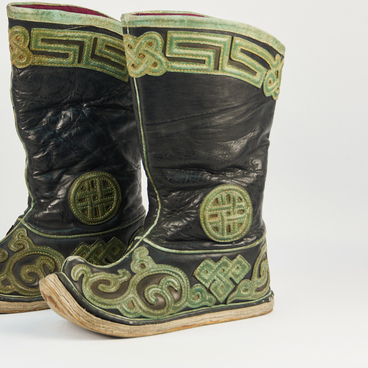Since ancient times, the horse has been the main means of transportation for the people of Tuva. It was used for horseback riding, military campaigns, and transportation of goods.
The Tuvan horse was bred by Tuva arat herders. It is close to the Mongolian horse, but has a larger build. This horse breed has an elongated body, well-developed mane, fetlocks, and tail. In his scientific works, Sevyan Israelovich Weinstein wrote that Tuvan horses are stunted and have an average height at the withers of about 128 centimeters.
The distinctive features of the Tuvan horse breed are its endurance, high performance and adaptability to the harsh climatic conditions of the habitat on the territory of the Republic of Tuva. This breed is adapted to long riding trips. It withstands temperature fluctuations, lack of water and forage during long rides. The Tuvan people decorated their horses with colorful horse trappings.
A horse’s harness is a yardstick of its owner’s grandeur and wealth. The main item in the horse’s harness is the saddle.
This riding saddle (ezer) is for a horse. The frame of the saddletree is made of birch. The saddle has relatively high bows — almost vertical pommel and steeply curved cantle. The saddle panel (kovenchik) is made of felt and covered with red cloth. It is attached to the saddle with six large plaques (bazatkysh), which were attached to the saddle with leather straps through the holes drilled in the wooden frame of the saddle. On the front and rear boards of the saddle tree were narrow straps (dergi) for tying loads. On the sides of the saddle there are leather saddlecloths (part of the animal skin) of dark brown color (torepchi) with artistic appliqué on the sides and bottom edges. Along the edge of the cloth there is a framing in the form of a single convex line, which is also emphasized by interlacing vegetal patterns, and along the lower edges there is a “knot of happiness” motif. On both sides of the saddle there are brown leather saddle skirts (tepse — flanks on the edges of the saddle), richly decorated with black leather appliqué.
Tuvan stirrups are distinctive for the enlarged circular support platform for the foot. The stirrups are decorated with images of lion heads, which from ancient times had a protective function.




